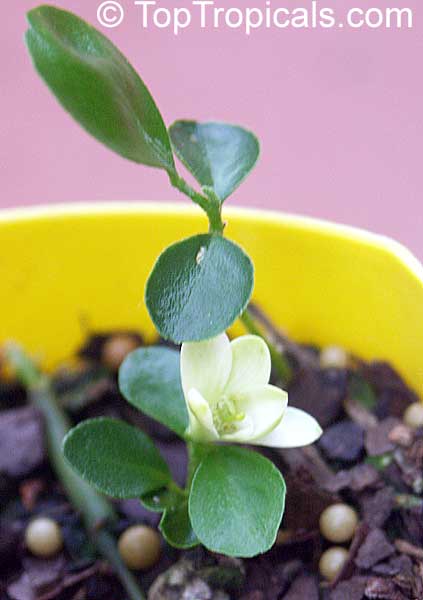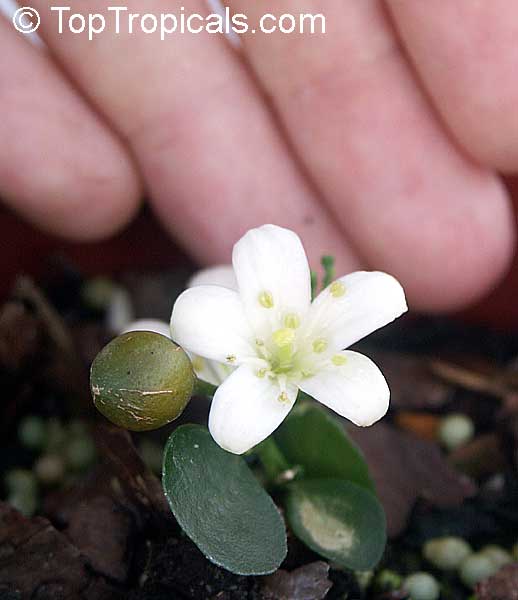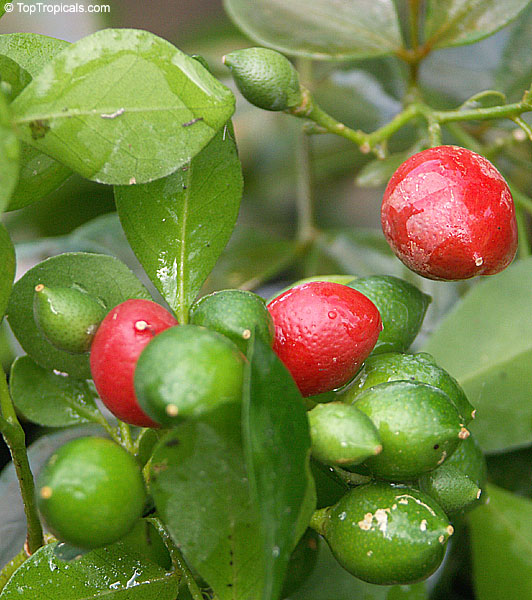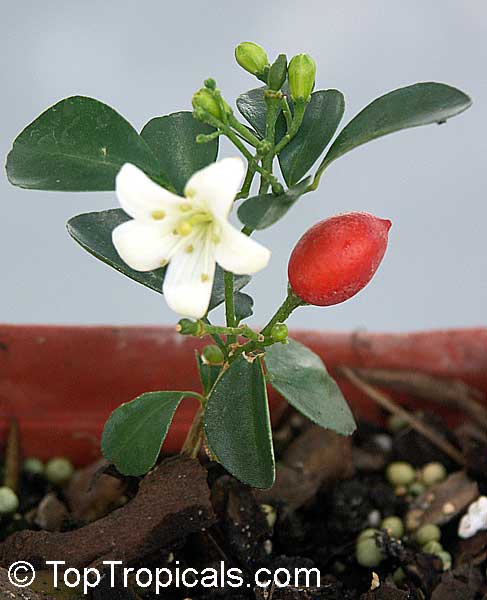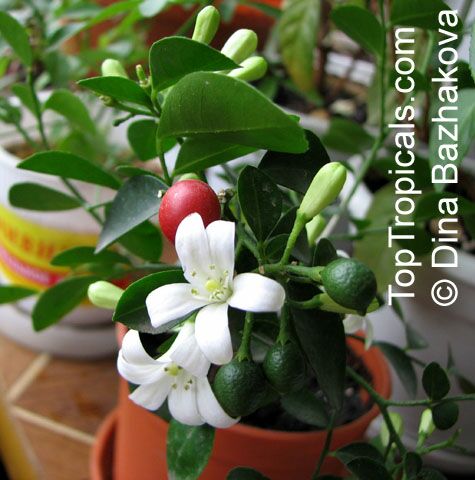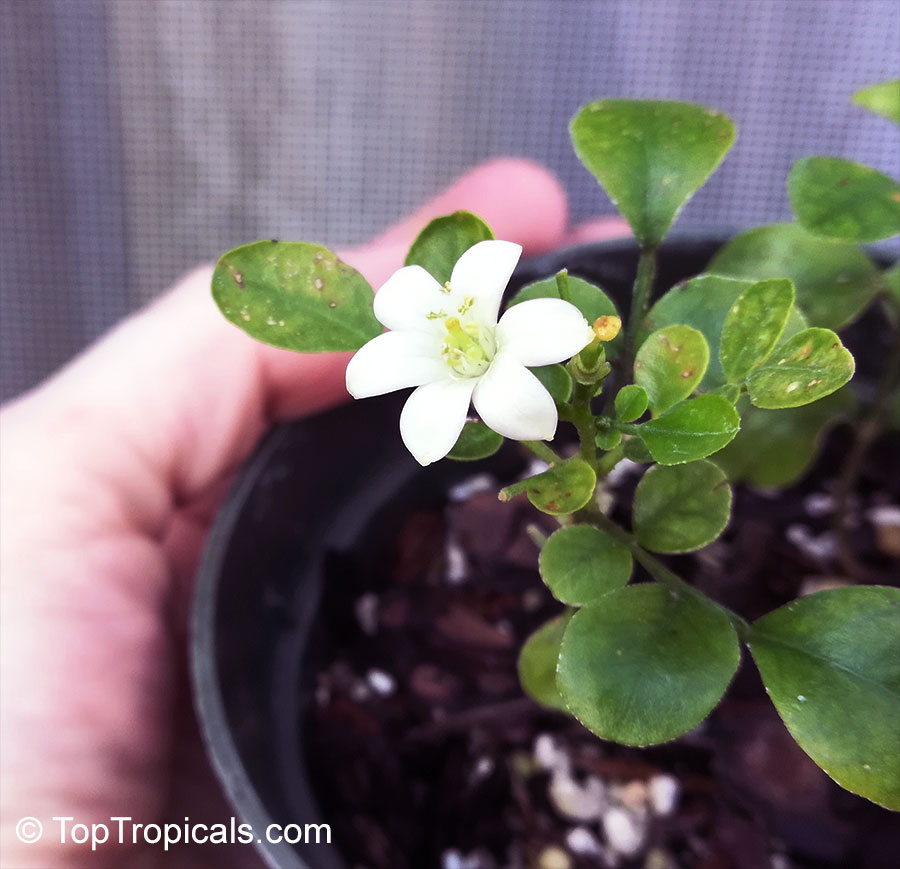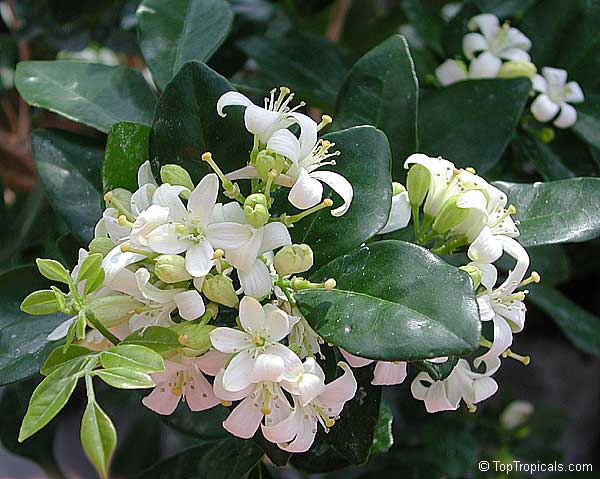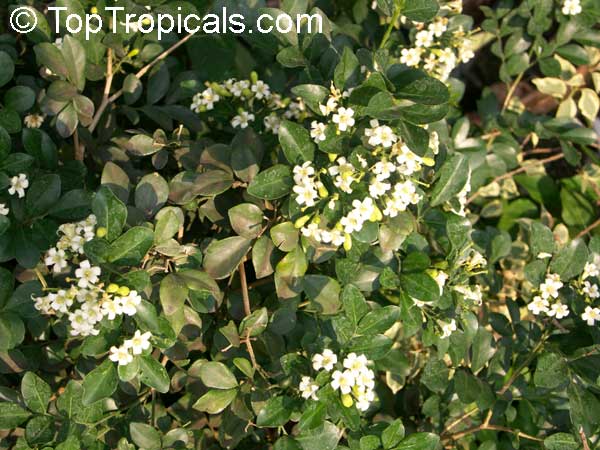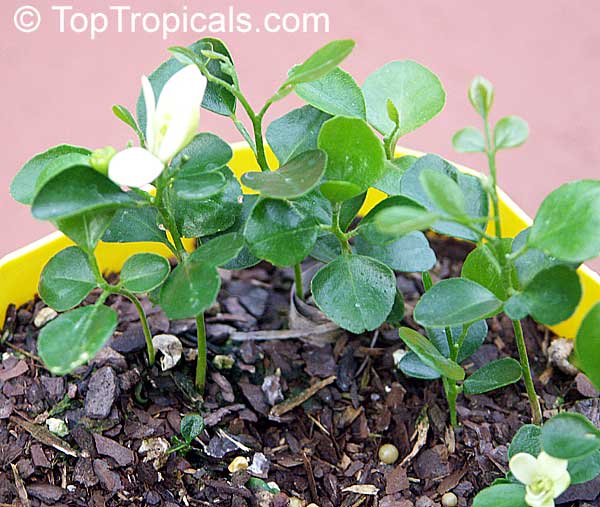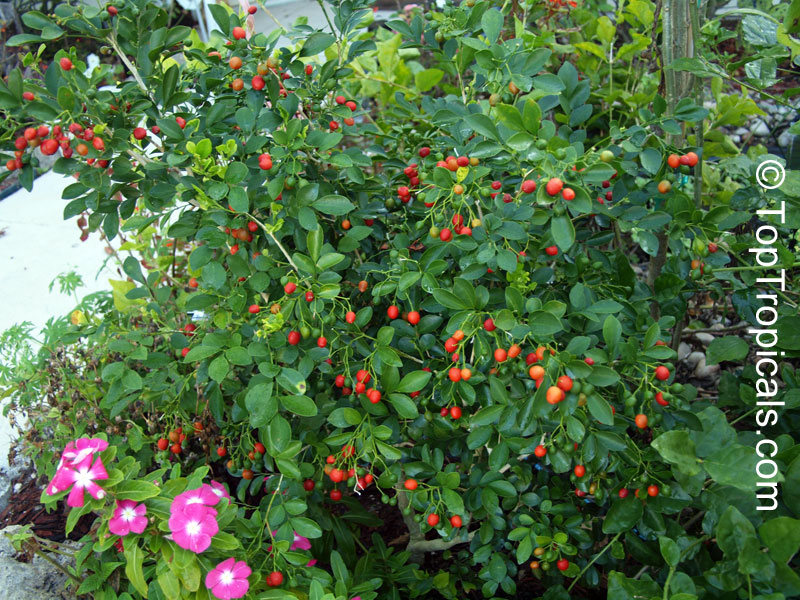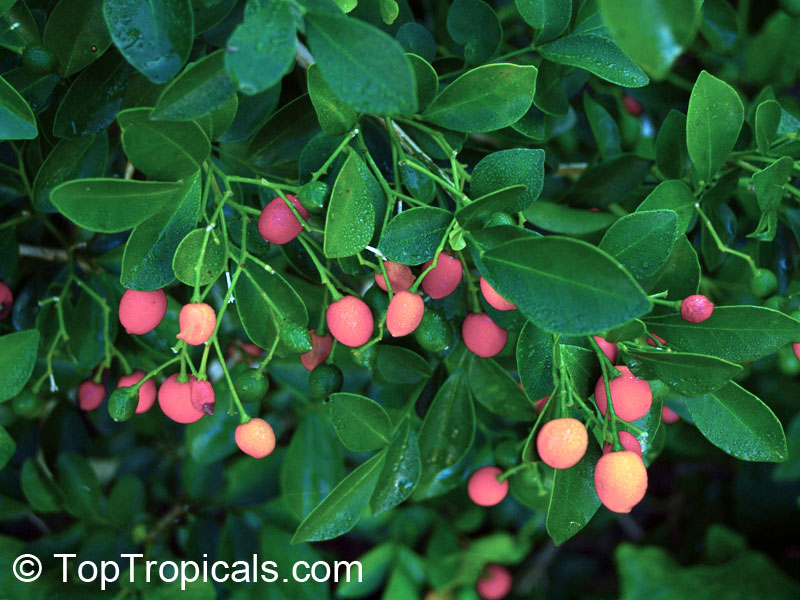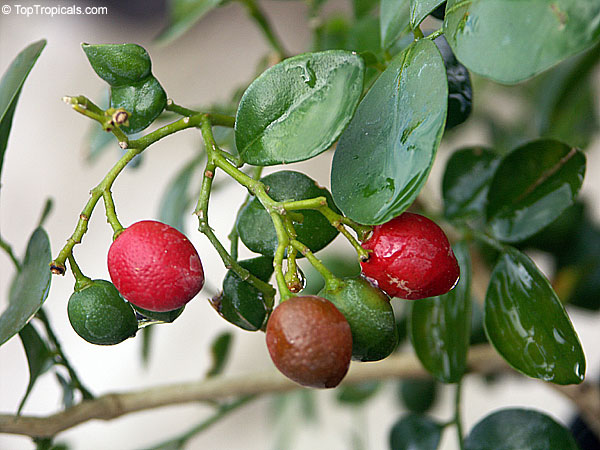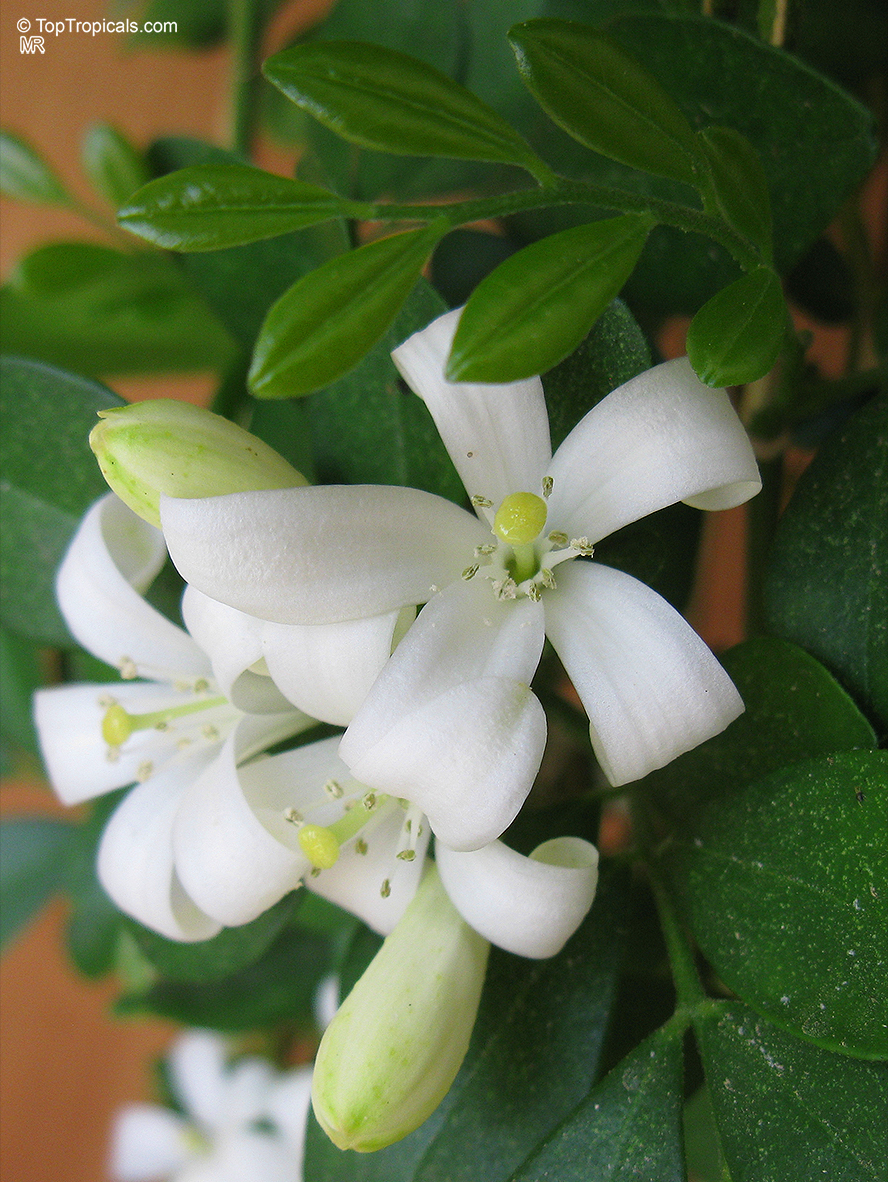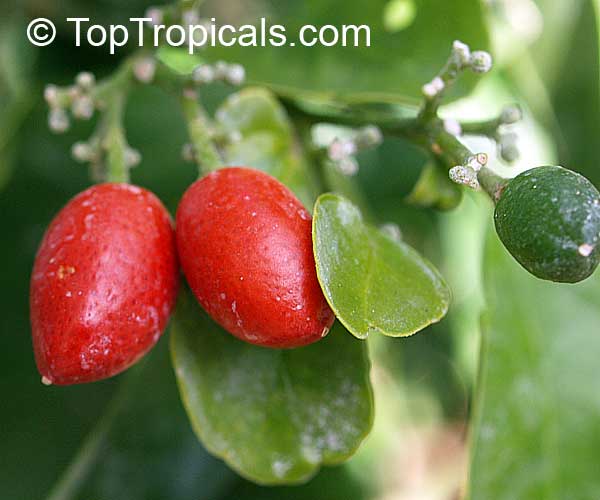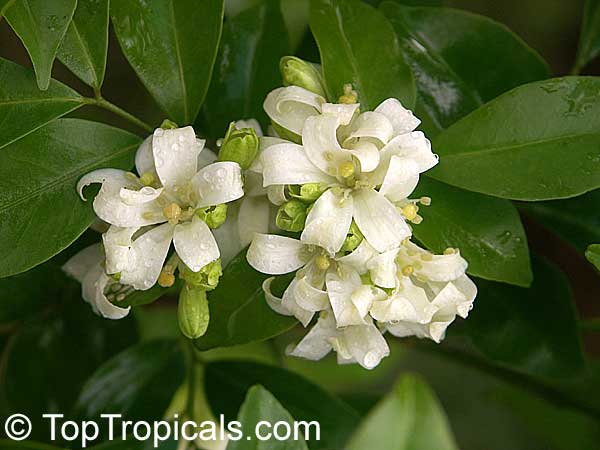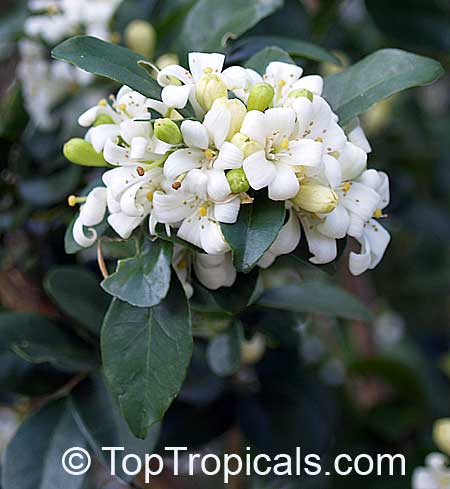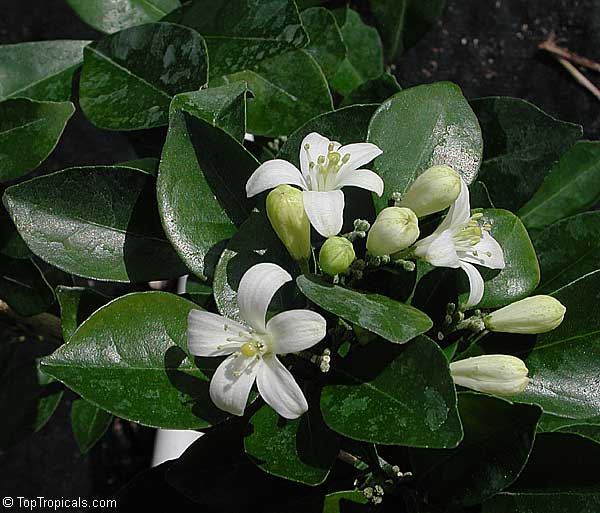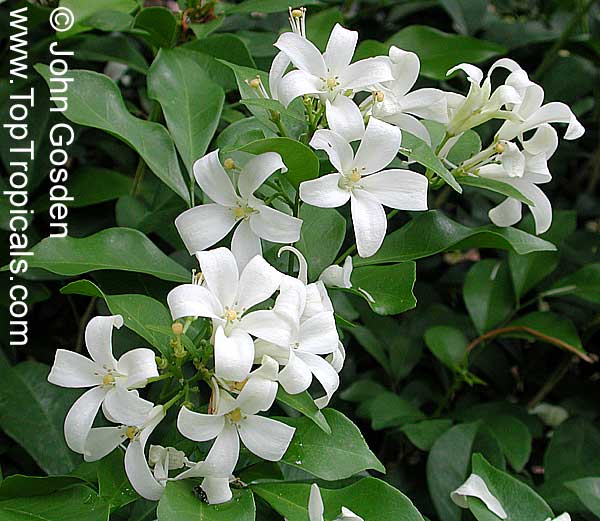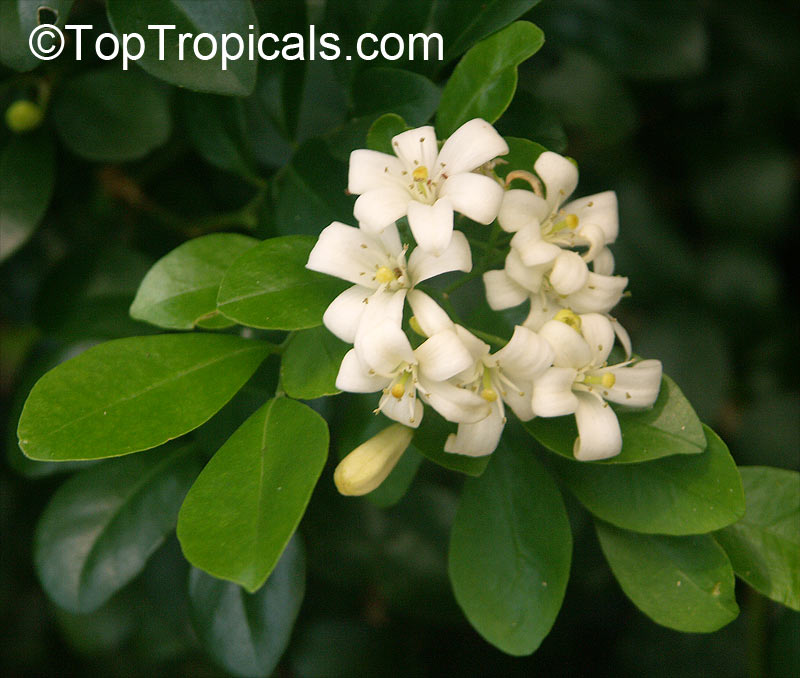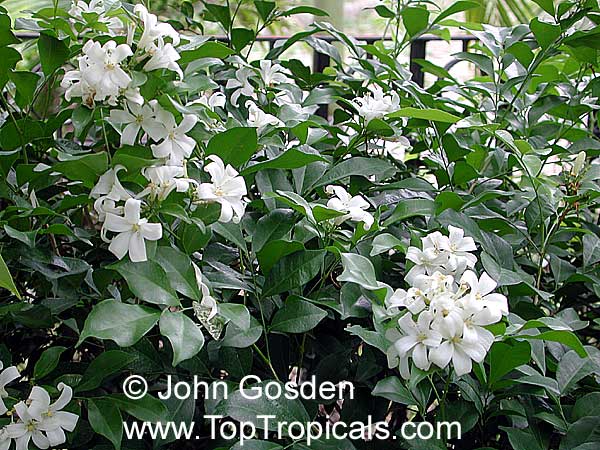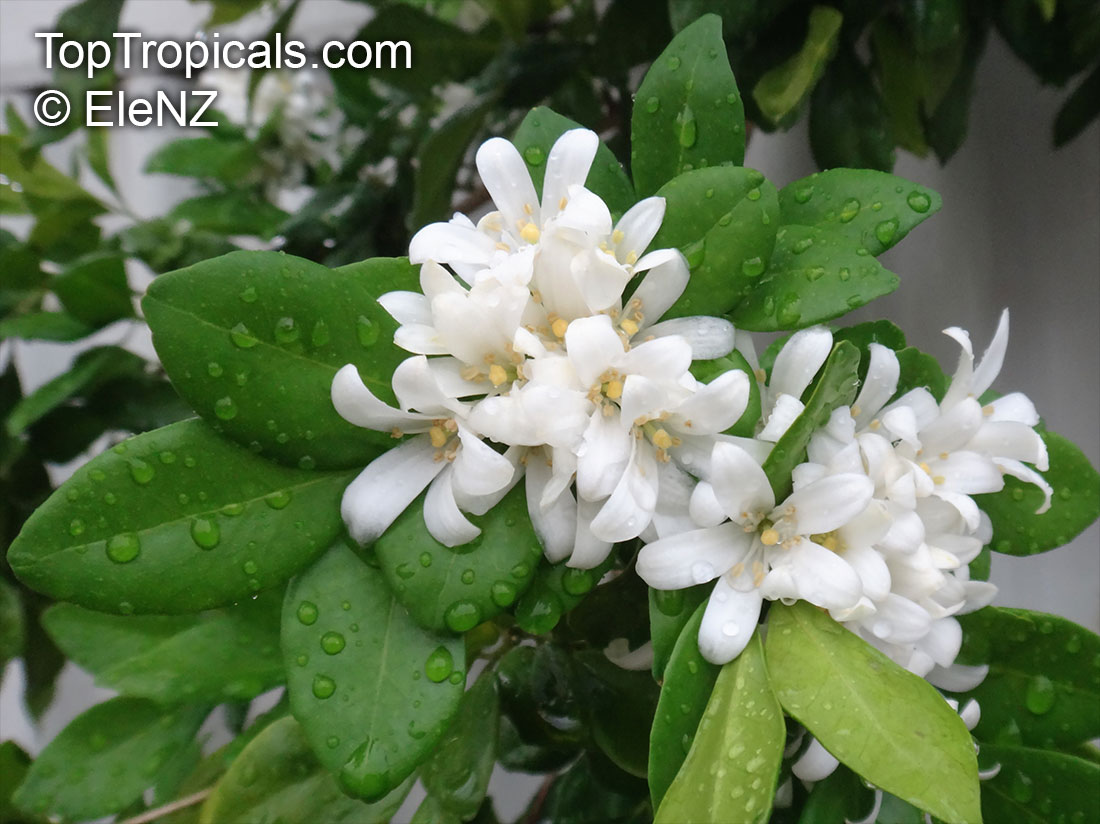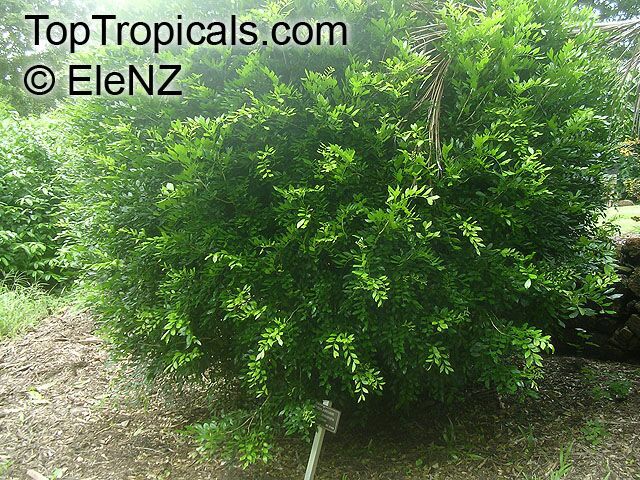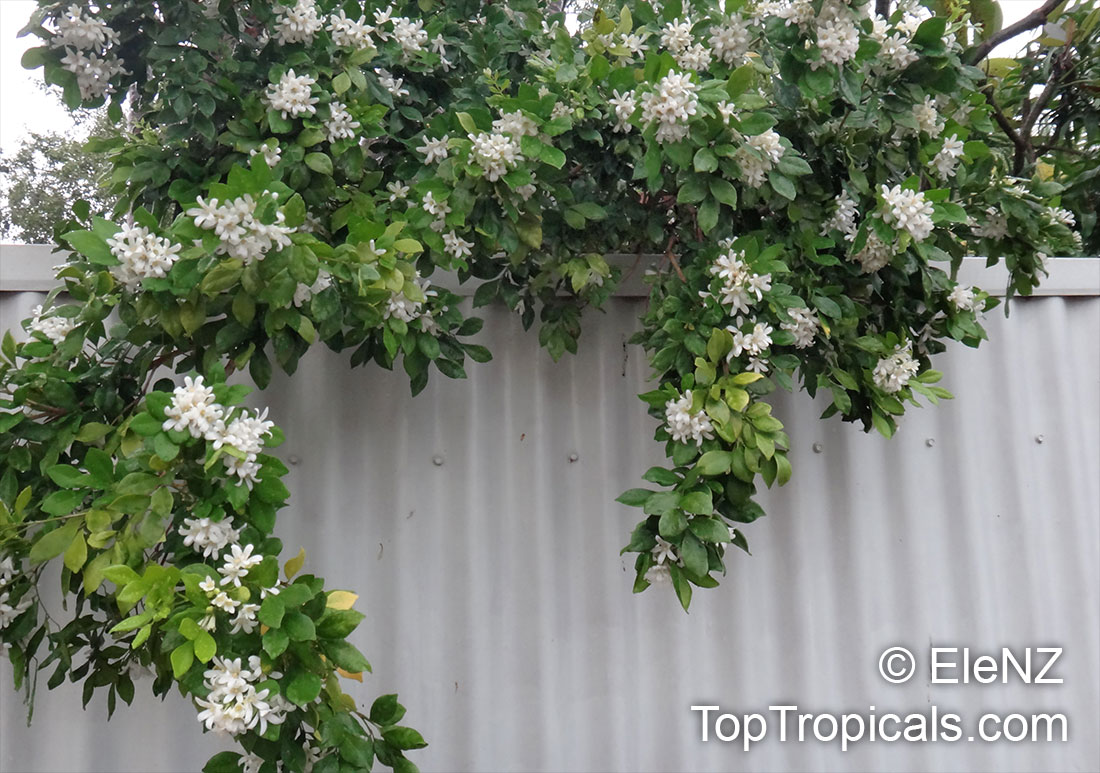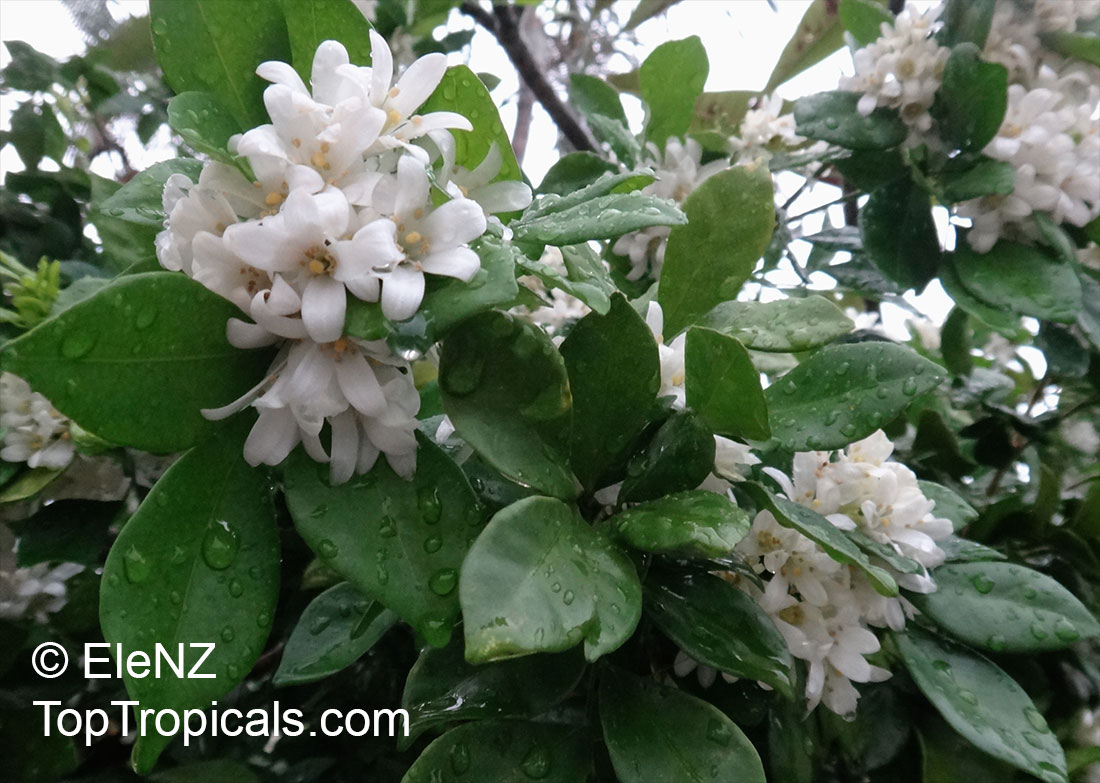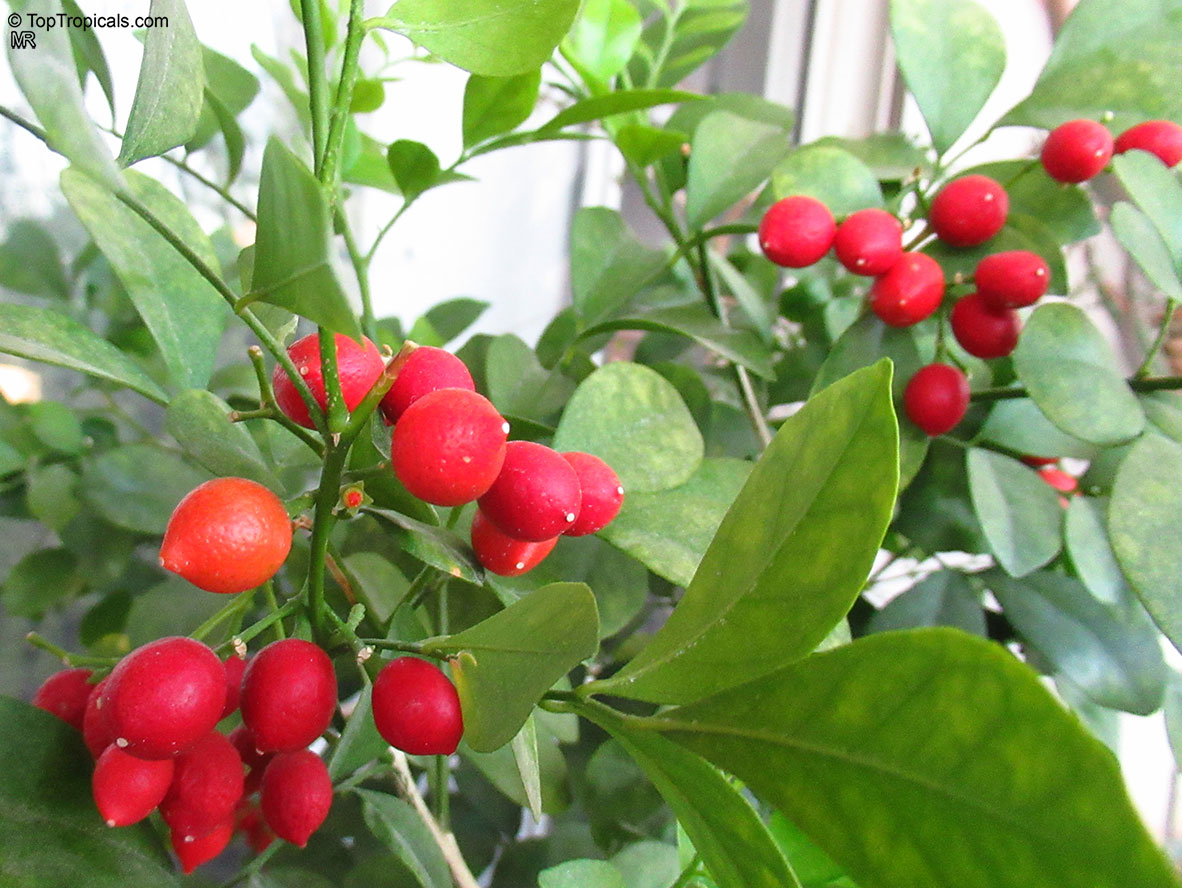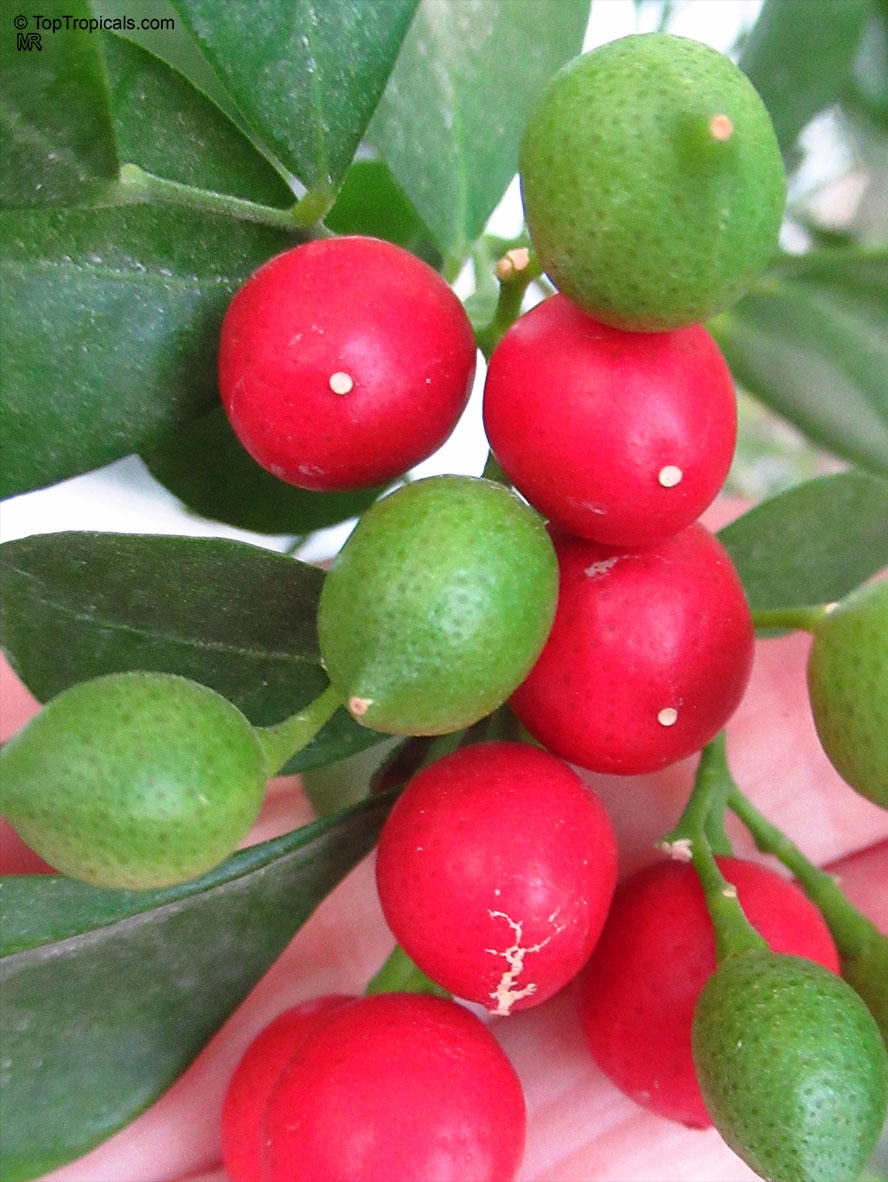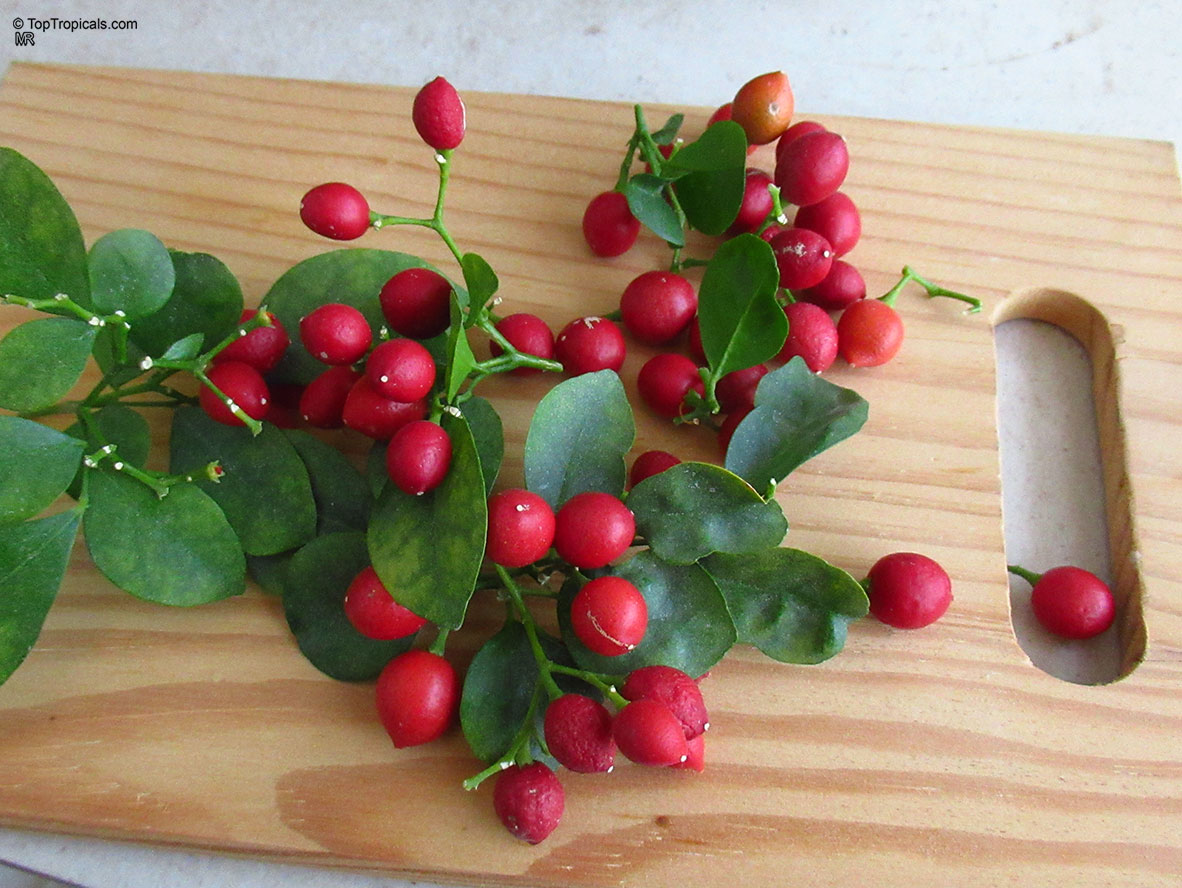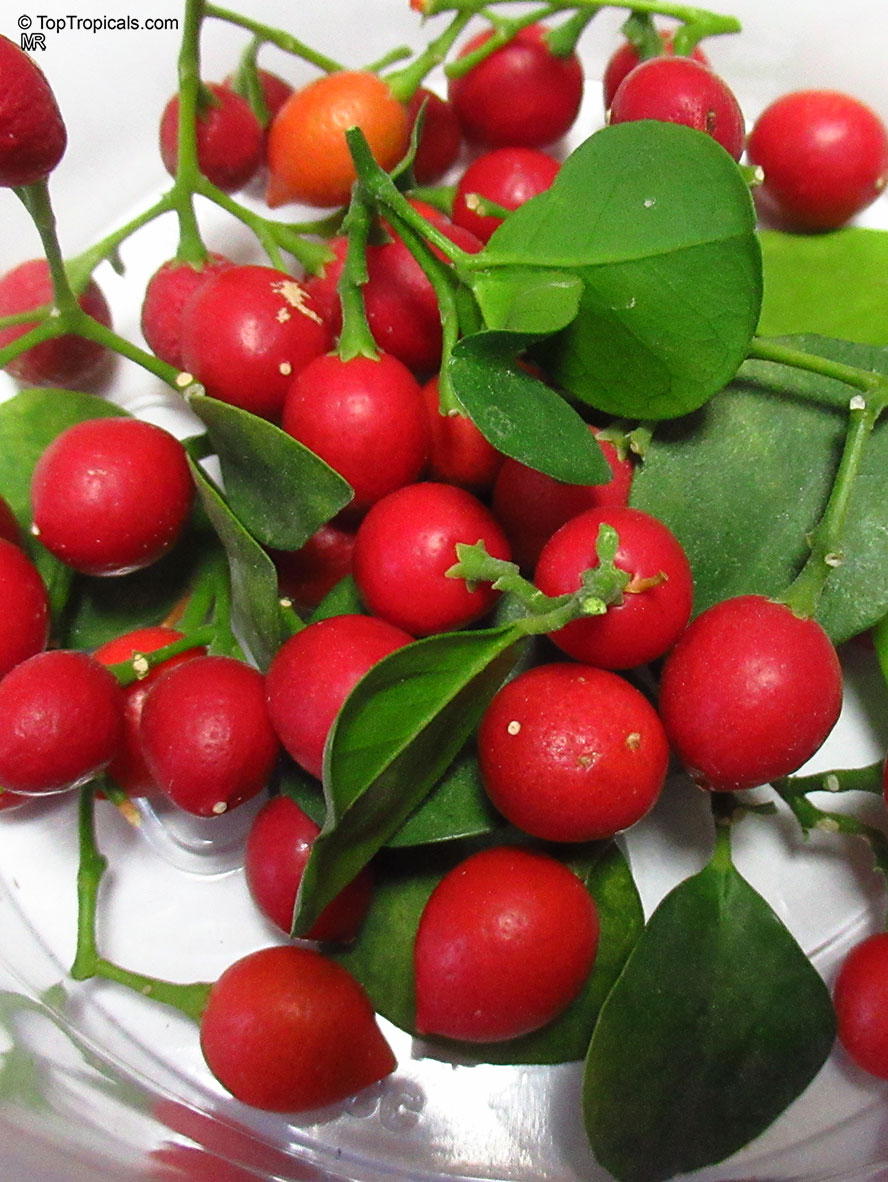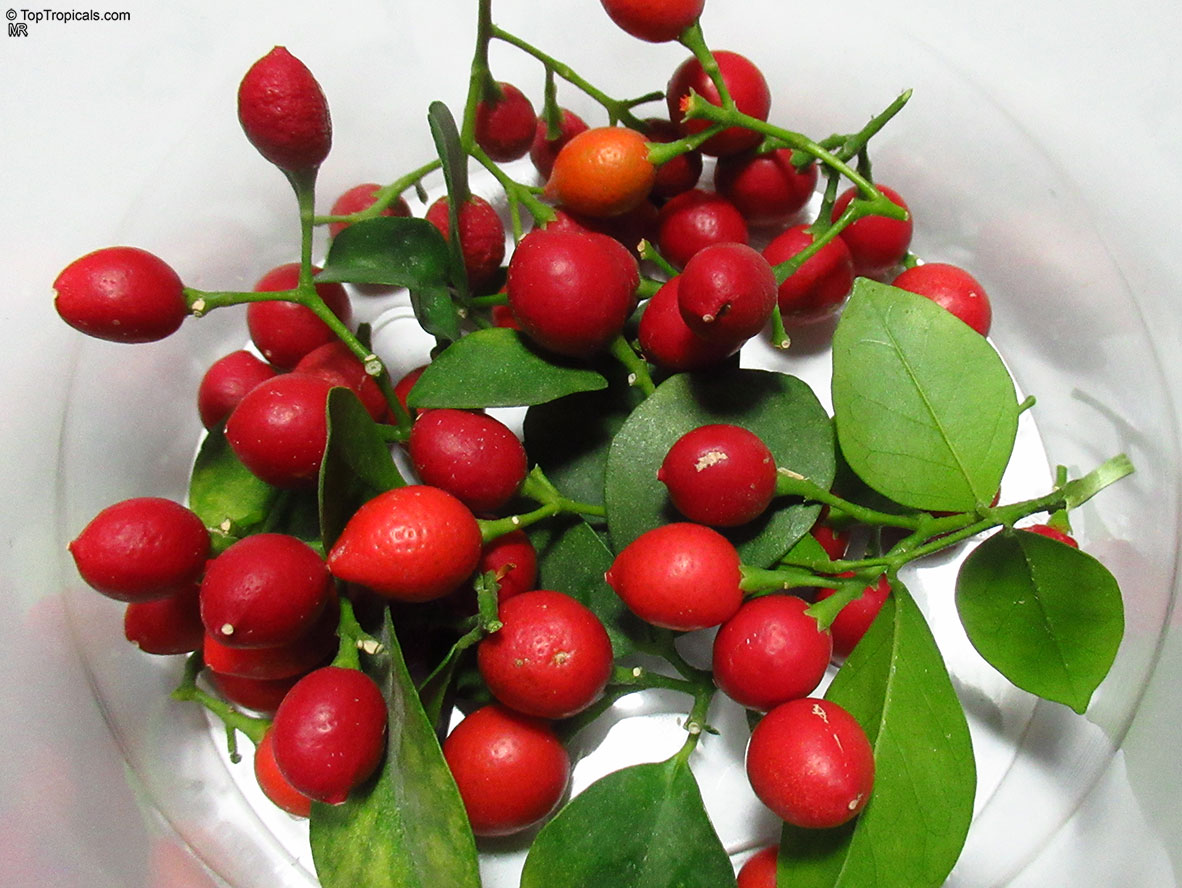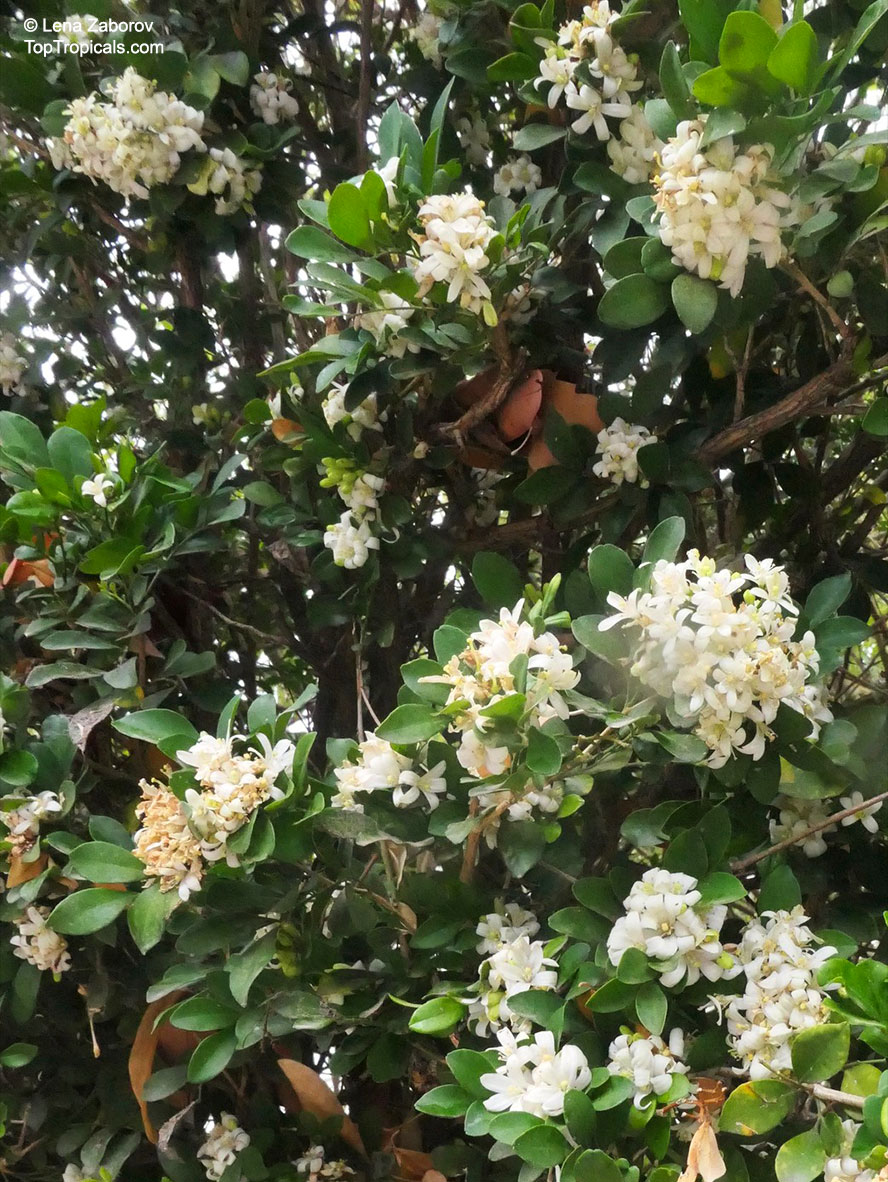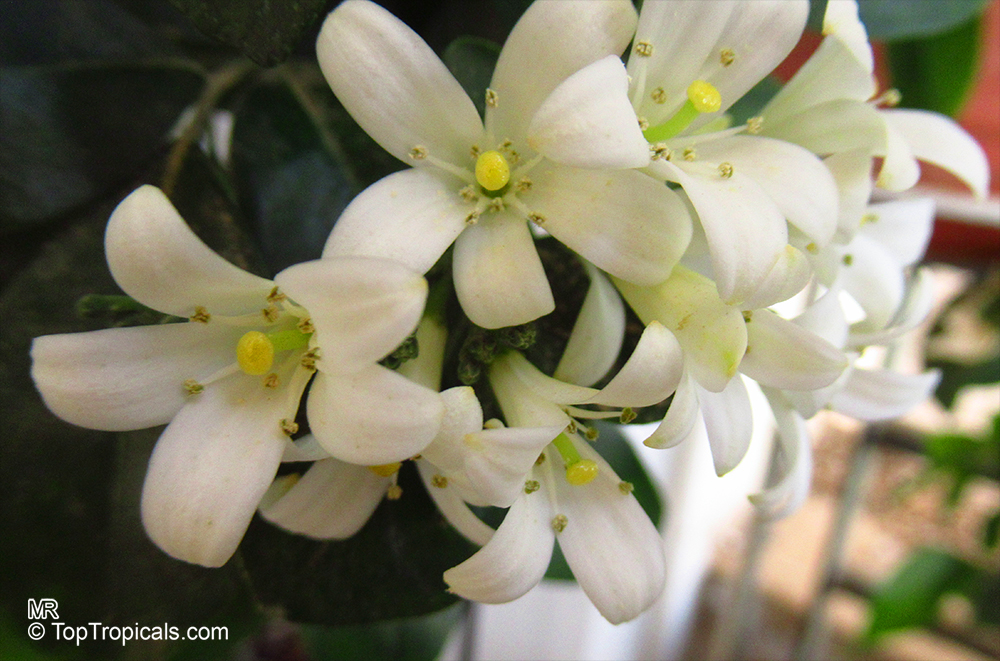Murraya - Plant Encyclopedia Results
Top Tropicals Plant Encyclopedia
| Number of plants found: 3 |
Botanical name: Murraya koenigii
Common names: Curry leaf, Curry Patta
Family: Rutaceae
Origin: Sri Lanka
Hardiness: 35°F












Curry leaf, also known as curry patta, is a beloved ingredient in Indian kitchens, prized for its aromatic, oil-rich leaves. These tiny green leaves bring a burst of flavor to dishes, often used fresh or quickly fried in butter or oil to unlock their full potential. In some recipes, they are toasted or oven-dried just before use for an extra punch. Traditionally, curry leaves are enjoyed by diabetics in southern India for their health benefits. And if that wasn't enough, the plant also graces you with small, fragrant white flowers - making it as delightful to the nose as it is to the taste buds!
Small leaves are rich in an essential oil and are source of the spice. The commonly used spice curry patta is traditionally consumed by diabetics in southern part of India. In Indian cuisines, curry leaves are used fresh; for some recipes, the leaves should be oven-dried or toasted immediately befor usage. Another common technique is short frying in butter or oil The small white flowers are sweetly scented. It needs warm temperatures with full sun to partial shade. The soil should be allowed to thoroughly dry between waterings. Fertilize weekly during the growing season. Water very sparingly during the winter months and do not fertilize. Since it is a small tree it doesn't need repotting very often.
Curry Leaf - is the Flavor Powerhouse! Also known as curry patta, it is a beloved ingredient in Indian kitchens, prized for its aromatic, oil-rich leaves.
These tiny green leaves bring a burst of flavor to dishes, often used fresh or quickly fried in butter or oil to unlock their full potential. In some recipes, they are toasted or oven-dried just before use for an extra punch.
Traditionally, curry leaves are enjoyed by diabetics in southern India for their health benefits.
The plant also graces you with small, fragrant white flowers, followed by showy purple fruit - making it as delightful to the nose as it is to the taste buds!
Recommended Fertilizer: SUNSHINE Robusta - Rapid Growth Booster
This item can not be shipped. Pick up only. We can provide local delivery around Ft. Myers or Sebring, Florida. Contact us for an estimate. Non-pickup orders are subject to restocking fees.
Botanical name: Murraya paniculata
Common names: Miniature Orange Jasmine, Murraya Mini, Chinese Cosmetic Boxwood
Cultivar: 'Minima'
Family: Rutaceae
Origin: India
Hardiness: 35°F








This dwarf variety of murraya stays compact. The shrub gets bushy but stays short 1-2ft tall. Very fragrant flowers year round followed by red fruit. Good for potting culture and as a house plant. This plant is very interesting. The seedlings start blooming in small 1-2" size, when they have only 3-4 leaves! It needs lots of direct sun, likes to be somewhat on a dry side. Do not push it with fertilizer. It is VERY slow-growing. In 2 years it may grow as little as 1 ft tall, this is why it is called Mini. But the good thing is it starts blooming in few weeks to 1-2 months after germination!
Growing from seeds: like all murrayas (including M. koengii - Curry Leaf), seeds must be planted fresh, once collected. The ripe fruit is bright red. Very important: the red fruit skin and orange flesh must be carefully removed, and only a clean green "bean" should be planted. The seed inside the fruit is usually double, you may separate the halves - those are separate seeds. Be very careful, they are very tender - like a fresh green pea. Once planted in well-drained soil and provided with heat and constant moist, it should germinate within 1-2 weeks. Normally germination is around 100% if everything done right. Just remember, do not let the seed dry, and remove red skin - otherwise germination rate goes down or it will never sprout at all. Enjoy, this tiny little plant blooms year round and fragrance is wonderful!
No shipping. Local pick-up only. This plant may be available per request. Ask at the office if we have it at the moment.
Recommended Fertilizer: SUNSHINE Megaflor - Bloom Nutrition Booster
This item can not be shipped. Pick up only. We can provide local delivery around Ft. Myers or Sebring, Florida. Contact us for an estimate. Non-pickup orders are subject to restocking fees.
Botanical name: Murraya paniculata
Common names: Orange Jasmine, Orange Jessamine, Mock Orange, Lakeview Jasmine, Chinese Cosmetic Boxwood
Family: Rutaceae
Origin: India
Hardiness: 25°F









Murraya paniculata (Orange Jasmine) thrives in warm climates, however it can be grown in USDA Zone 9-11 by providing some basic care. When planted in colder areas, Murraya paniculata should be grown in a large pot, with protection from the cold in winter. It should be placed in a sunny spot and well watered, however it will also tolerate semi-shade. An additional layer of mulch should ensure that roots do not freeze. It is also tolerant of dry soil and coastal conditions, as well as salt which makes it a great seaside plant.
Murraya paniculata is a particularly attractive shrub, growing five to ten feet tall and boasting glossy green foliage. The plant is bedecked with fragrant white or off-white flowers that attract bees, butterflies and hummingbirds. Appropriately pruned, it can create an impressive hedge, with the added bonus of its lovely fragrance.
This is an excellent choice for warm climate gardens, as it is easy to grow, requires minimal care, and adds beauty and fragrance to its surroundings. For those in colder climates, a pot of this delightful shrub may give days of pleasure.
Use link to repeat this search:
https://toptropicals.com/cgi-bin/garden_catalog/cat.cgi?find=murraya&search_op=and&keyword_op=and&language=e&number=10
&no_change_lang=1&user=tt&sale=1&first=0
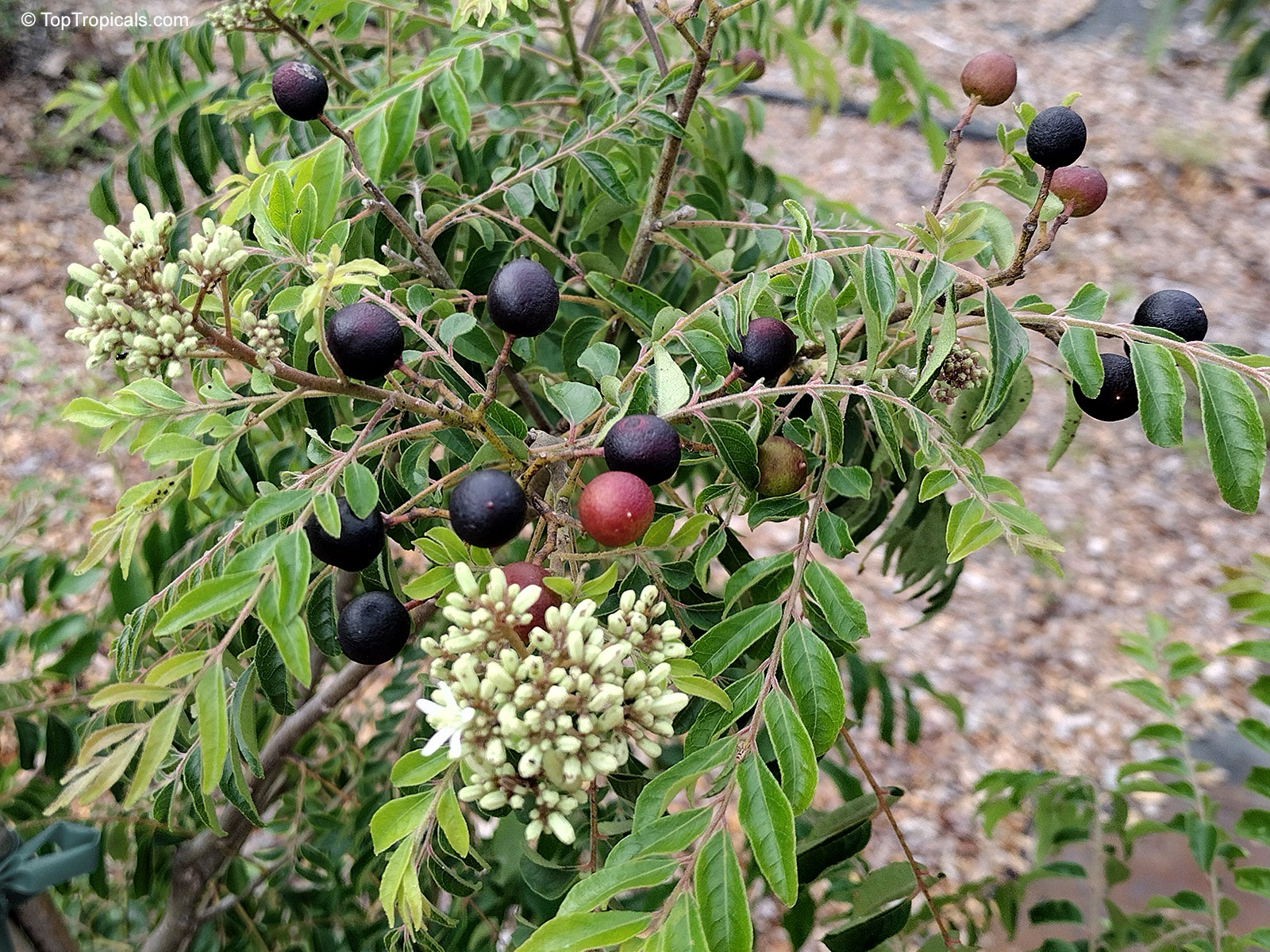
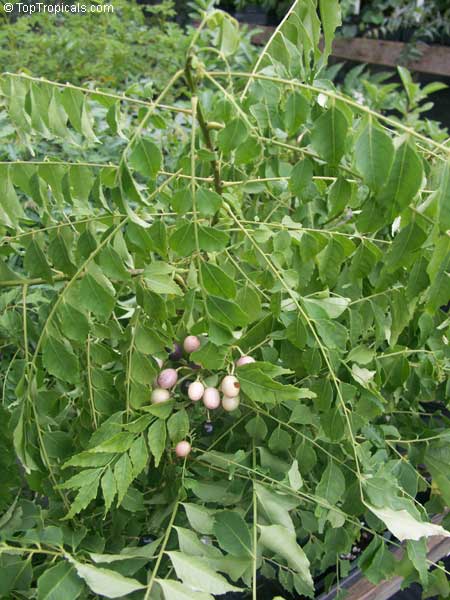
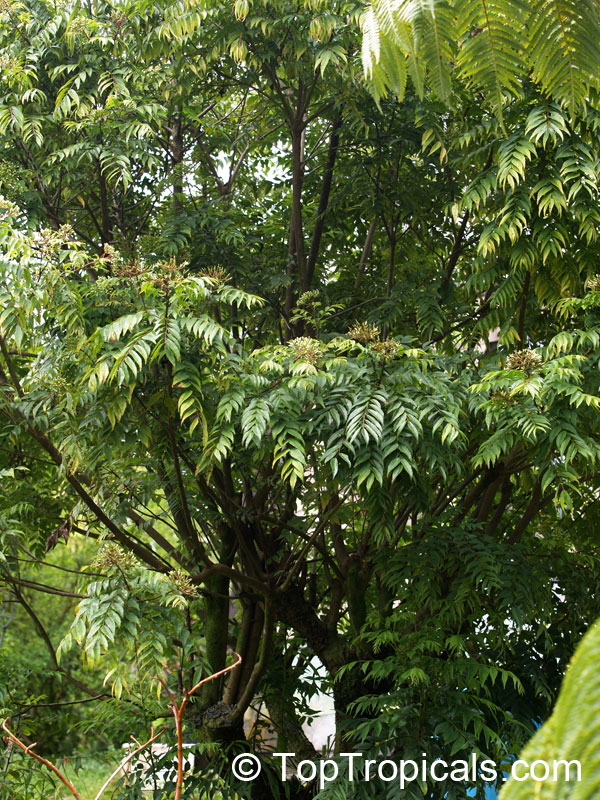



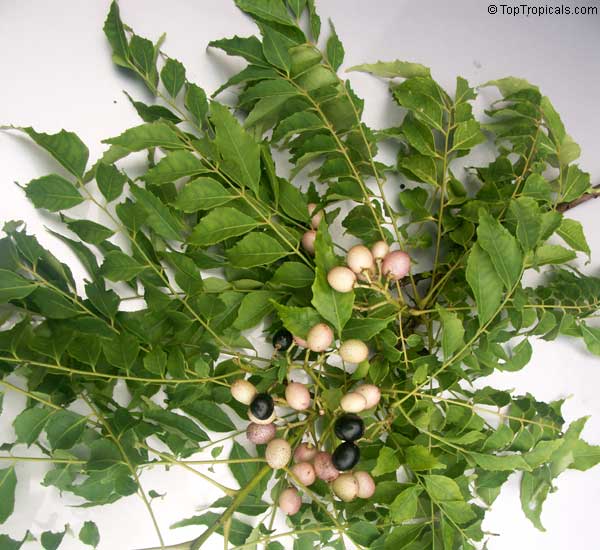
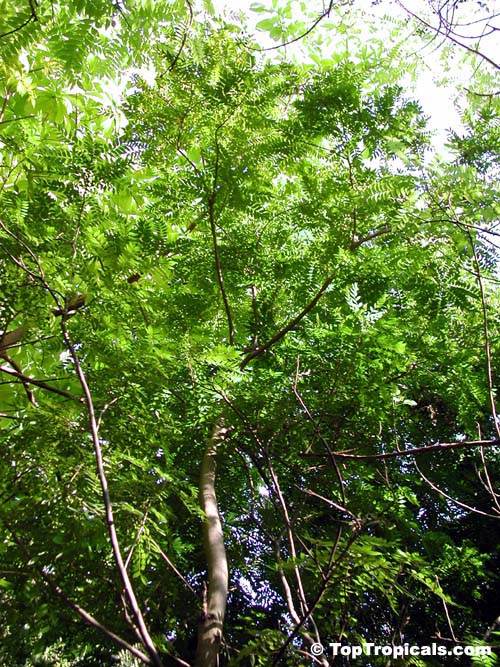
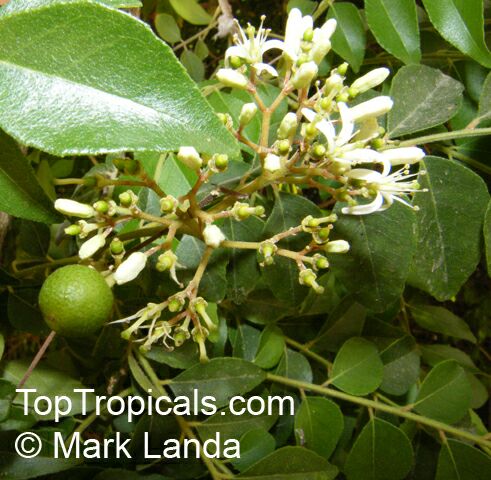
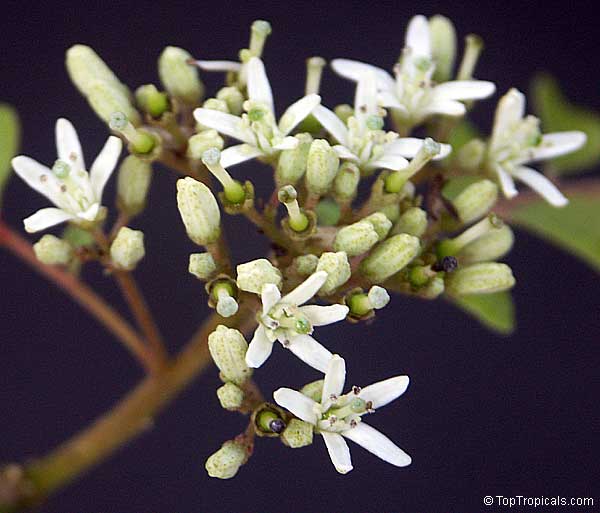
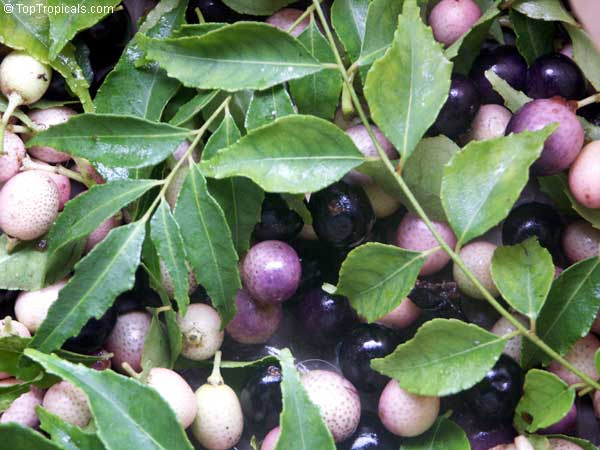
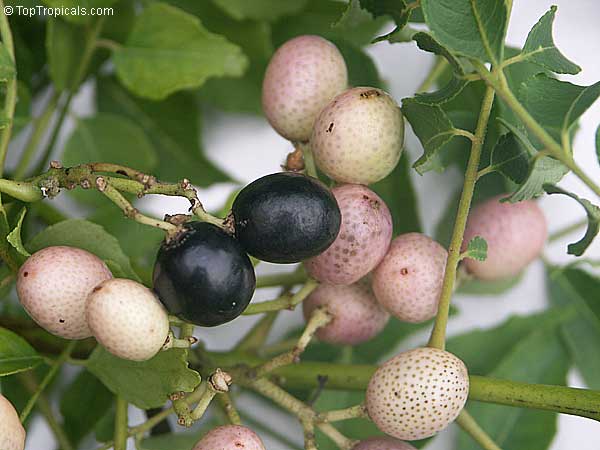
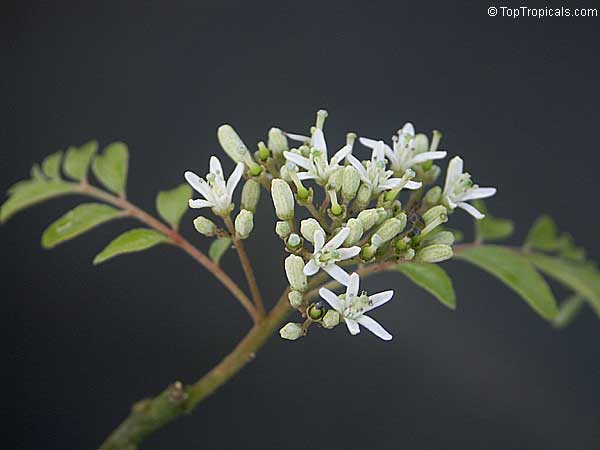

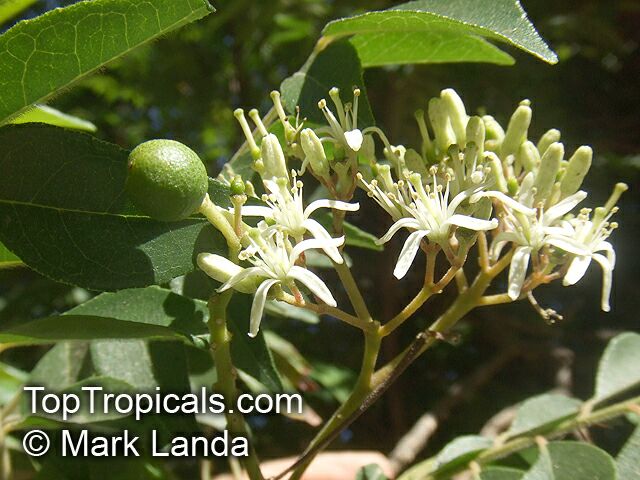
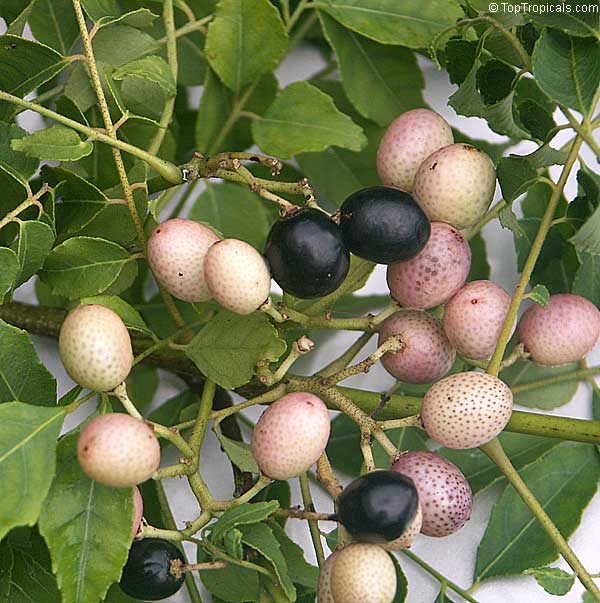
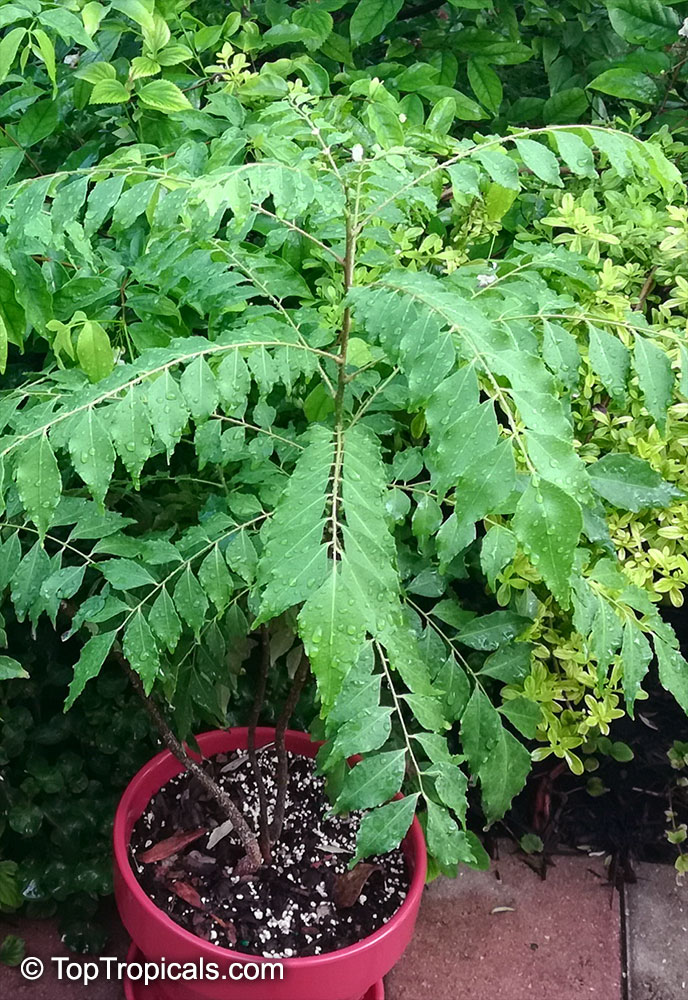

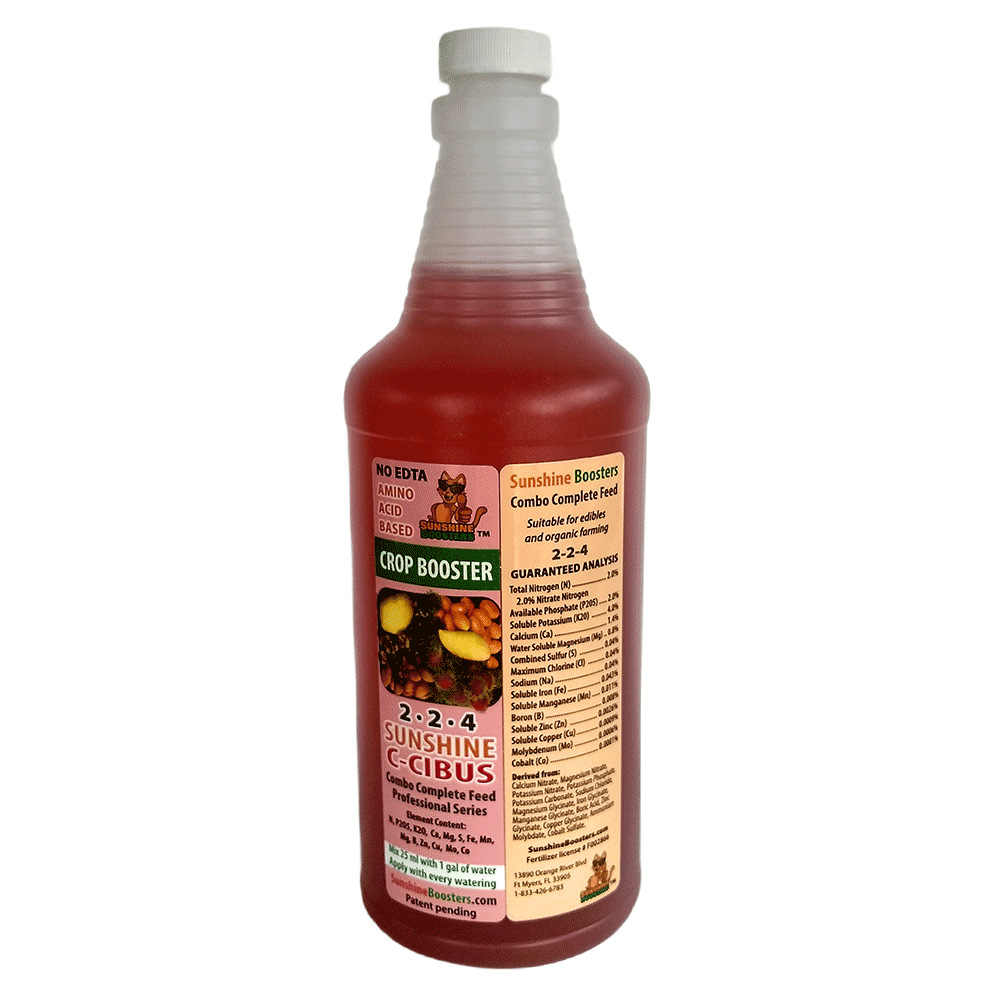 SUNSHINE C-Cibus (NPK 2-2-4) - Crop Booster for every watering.
SUNSHINE C-Cibus (NPK 2-2-4) - Crop Booster for every watering. 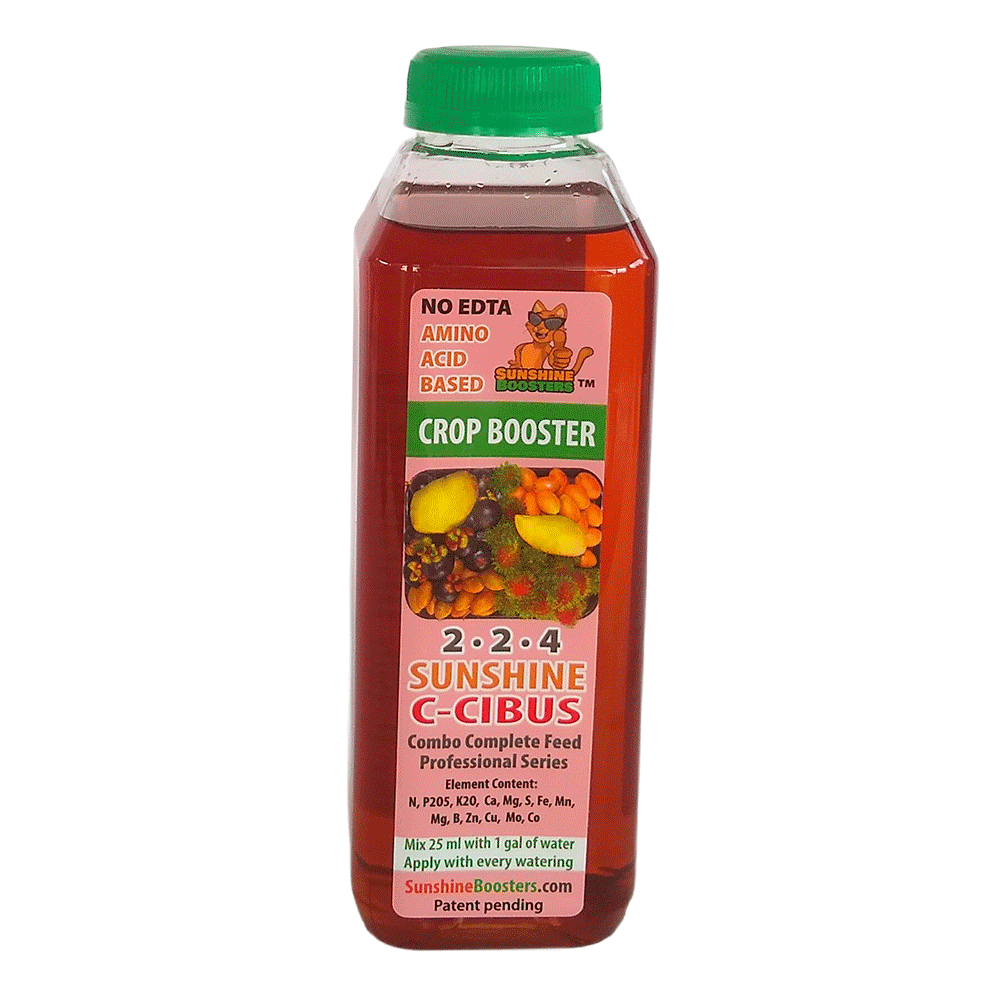 SUNSHINE C-Cibus (NPK 2-2-4) - Crop Booster for every watering.
SUNSHINE C-Cibus (NPK 2-2-4) - Crop Booster for every watering. 